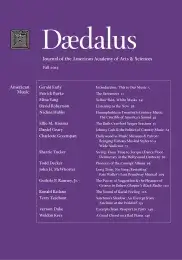Yellow Skin, White Masks
Ethnic studies scholars have long bemoaned the near absence of Asians on the big and small screens and popular music charts in the United States, rendering them as outsiders vis-à-vis the American public sphere. In the last few years, however, Asians have sprung up on shows like “Glee” and “America’s Best Dance Crew” in disproportionately large numbers, challenging entrenched stereotypes and creating new audiovisual associations with Asianness. This essay considers how emerging Asian American hip-hop dancers and musicians negotiate their self-representation in different contexts and what their strategies reveal about the postmillennial Asian youth’s relationship to American and transpacific culture and the outer limits of American music.
Music, as purveyed by the MGM Grand Hollywood Theater and Monte Carlo Resort & Casino in the heart of Las Vegas–the entertainment mecca of the United States–is supposedly the very inspiration for life itself. Featuring JabbaWockeeZ, the winning hip-hop group from the first season of the televised dance competition America’s Best Dance Crew (ABDC), MÜS.I.C.(read both as “music” and as “muse I see”) is comprised of fanciful episodes from a life lived creatively. The show featured synchronized dancing, comic miming, athletic feats, extravagant lighting effects, and glittery costumes, held together by a thumping soundtrack made up of familiar tunes, old and new. The JabbaWockeeZ members, who specialize in popping and b-boying, brought dance front and center in this musical experience, citing classic dance moments from the history of American popular music, from Gene Kelly’s elegant footwork in Singin’ in the Rain, to James Brown’s struts and Michael Jackson’s moonwalk, to the more recent hip gyrations of Beyoncé’s “Single Girls” and the “Party Rock” shuffle courtesy of LMFAO.
From the beginning to the end of the show, one element remained constant: the blank white masks that the dancers wore and that have become JabbaWockeeZ’s signature look. Used as props and as part . . .
